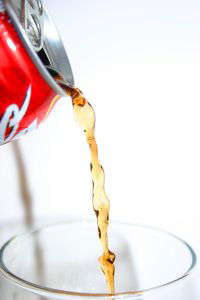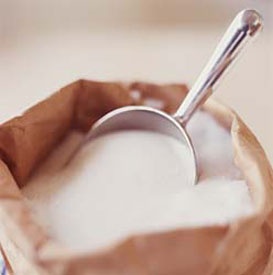When I heard the recent news that a Gallup poll found 48 percent of U.S. adults consume at least one soda every day – the average amount being 2.6 glasses – my initial reaction was “Well, at least the other half isn’t drinking a soda a day.”
But Diets In Review’s Registered Dietitian Mary Hartley, RD, took it a step further saying while that’s true, it’s not because of the data from this Gallup poll, which is not a scientific survey. “The way they report soda intake in terms of ‘glasses a day’ is flaw,” she said. “How big are the glasses?”
Mary says the most worthwhile intake data actually comes from the National Health and Nutrition Examination Survey (NHANES). This is because NHANES is a continuously running cross-sectional survey designed to monitor the health and nutritional status of the U.S. population.
The NHANES sample is carefully designed to include a selection of counties, both household segments and individual households, and sample persons from selected households. The samples also include oversampling to ensure reliable estimates of health and nutritional measures for population subgroups.
The most current figures from NHANES concerning soda consumption paint a slightly clearer picture than those of the recent Gallup poll. According to the NHANES August 2024 report Consumption of Sugar Drinks in the United States, overall, men consume an average of about 15 ounces of sugary drinks on any given day, and females consume about 8.5 ounces.
The average consumption of sugary beverages is higher in men than in woman of all ages, except among 2- to 5-year-olds. Consumption increases until ages 12–19 years and then decreases with age, is lowest among older women ( 3.5 ounces), and highest among men aged 12–19 (22.75 ounces).
Here are the figures as summarized by NHANES:
- Males consume more sugary beverages than females.
- Teenagers and young adults consume more sugar drinks than any other age group.
- Approximately 50 percent of the U.S. population consumes sugar drinks on any given day.
- Non-Hispanic black youth consume more sugary drinks in relation to their overall diet than their Mexican-American counterparts.
- Non-Hispanic black and Mexican-American adults consume more than non-Hispanic white adults.
- Low-income populations consume more sugary drinks in relation to their overall diet than those with higher incomes.
- Most sugary drinks not consumed at home are purchased from stores and not restaurants or schools.
 The reported also suggested that consumption of sugary drinks in the U.S. has increased over the last 30 years among both children and adults. This is especially concerning as sugary drinks, including soda, have been linked to poor diet, weight gain, obesity, Type 2 diabetes and other obesity-related diseases.
The reported also suggested that consumption of sugary drinks in the U.S. has increased over the last 30 years among both children and adults. This is especially concerning as sugary drinks, including soda, have been linked to poor diet, weight gain, obesity, Type 2 diabetes and other obesity-related diseases.
In general, limiting soda and other sugary drinks is a good idea as the average 12 ounce soda contains roughly 140 calories and 40 grams of sugar, which is roughly equivalent to 10 cubes of white sugar. The USDA recommends limiting the consumption of sweets and fatty foods to 5-15 percent of your daily caloric intake. So if you drink a soda a day – which really isn’t a healthy habit to begin with – you’ve already met that limit and should cut out all other sources of sugar and fatty foods to stay within the recommendation. But let’s be honest, that probably isn’t what’s happening in most soda drinkers’ diets.
Also Read:
